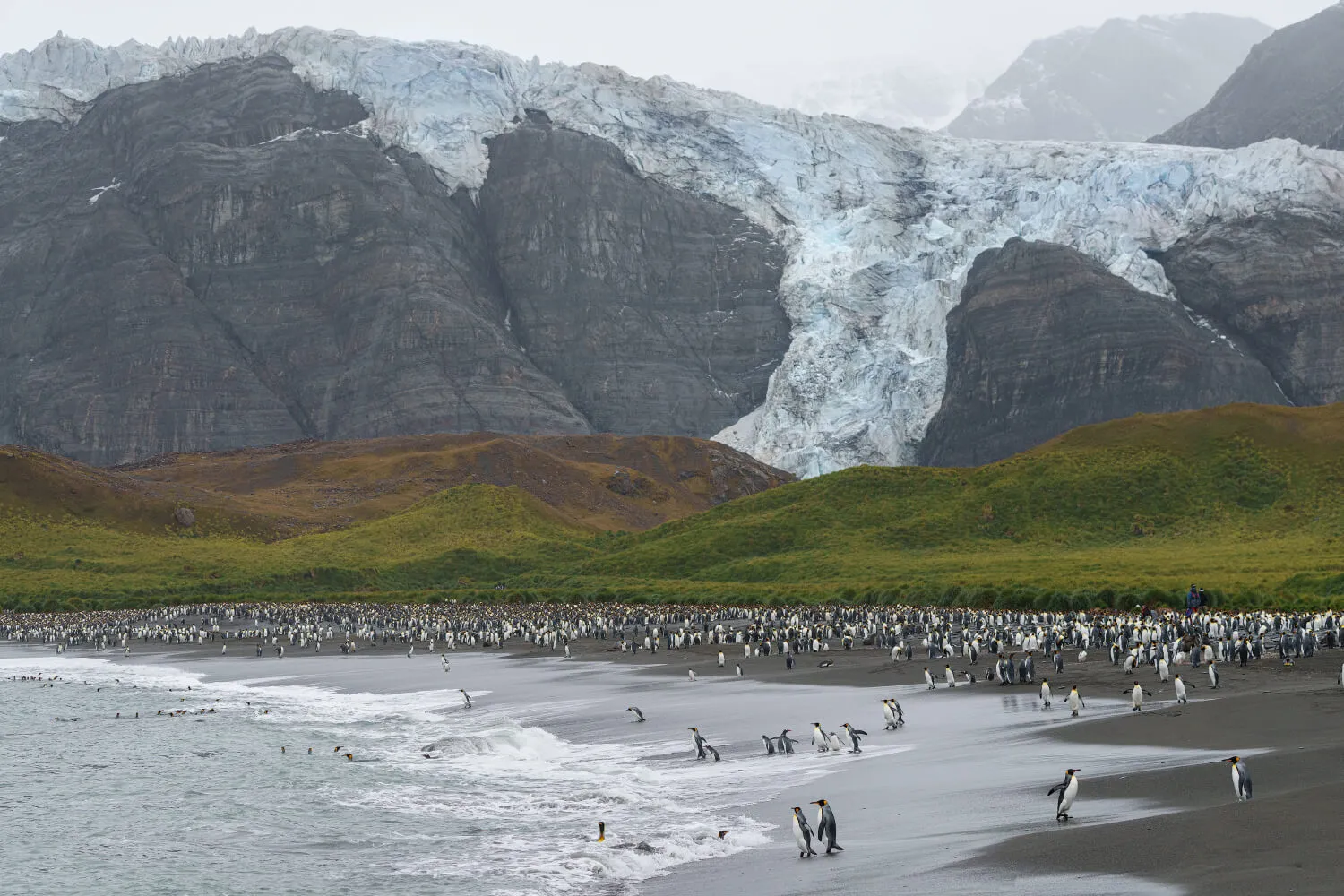

Expert Antarctica Photography Tips
by Mark Edward Harris
I'm known in the photography world as a fearless explorer, having worked in some of the most off the beaten path areas of the globe, including multiple trips to North Korea, Iran, and Iraq, as well as intense treks through the jungles of the Amazon, the forests of Borneo, and Nepal's Himalayas.Yet after traveling to more than 100 countries and six continents, I still didn't have the courage to take on the dreaded Drake Passage. I simply didn't have the stomach for it, that is until I learned about the fly-cruise option from Punta Arenas. At last, the elusive seventh continent was within sight.

After a couple of days at The Singular Patagonia to adjust to the local time zone and to explore this magnificent part of Chile, it was time for the two-hour flight to the South Shetland Islands to begin what became one of the most remarkable journeys of my life.Antarctica21's Magellan Explorer is an extremely stable, beautifully decorated, and comfortable home-away-from-home with an incredible crew, including top experts on the Antarctic. They all were doing their jobs at a world-class level, so it was my turn to venture forth and see what I could do camera-in-hand in one of the world's last frontiers.Here are some of my Antarctica photography tips.
Camera Lenses
We did Zodiac excursions every morning and afternoon, landing on some of the most remote places on earth. However, we were often greeted by a variety of locals, mostly Gentoo and Chinstrap penguins that became the focus of my Nikon cameras.Keeping a respectful distance, I found that my Nikkor 300mm and Nikkor 500mm lenses allowed me to do portraits of individuals in their environments that told a bigger story rather than just wider overview shots.That said, there were plenty of opportunities for my Nikkor 70-200mm to put in a full workday, as well as my Nikkor 24-70mm and Nikkor 20mm lenses for the seemingly endless amount of scenics we encountered.

Photography in the Cold
Since I teach photo workshops around the globe in addition to my magazine assignments and book projects, I would like to share a few photo suggestions that apply to freezing moments in time in the Antarctic.Let's start with a few accessories. I wear thin touch-sensitive gloves when out in the elements to operate the camera while keeping my hands warm. I add thick outer gloves with a pointer finger opening to depress the shutter if it's extremely cold.

Terra Firma
Part of the thrill of our Zodiac landings is to hike to interesting vantage points, often through heavy snow. While the ship can supply hiking poles, I carried my own Black Diamond Distance Z Trekking Poles because they fold into three sections, making them a great pair of sticks for travel. My hands are freed up for the use of the poles since I carry all my camera equipment in a Think Tank FirstLight camera bag in the 40L size.

Taking Photos While on the Move
Perhaps the essential photo technique to keep in mind when photographing from the ship or Zodiac is that these are moving vehicles that will cause a camera shake no matter how steady you can hold it. I recommend shooting with a shutter speed of at least 1/1000th of a second to avoid the photo-ruining blur associated with unwanted camera movement.

Taking Photos of Moving Objects
A variation of the same thing goes for photographing animals on land. Once again, while you might be holding the camera steady, animals move, so base your shutter speed on their movement.I would recommend the slowest shutter speed is 1/250th of a second with a standard or medium telephoto lens and at least a 1/500th of a second with a longer telephoto lens.Faster is even safer. I would suggest at least 1/2000th of a second for birds in flight and try panning with the bird as it moves across the sky.Once you have the proper shutter speed for the given situation, think about the depth of field that will best suit the image you are about to capture. Treat your camera's sensor like a canvas. How do you want to paint your scene? The art of photography is greatly enhanced by what you have in focus and out of focus.For landscapes, using a small aperture that gives you a lot of depth of field (think Ansel Adams) is often best, while portraits of humans or our fellow creatures often benefit from wider apertures which yield a shallower depth of field.

Recording Sound
To get great sound when shooting video either with my Nikon or iPhone, I use a Rode shotgun mic to get professional quality audio. These came in especially handy when documenting some of my braver travel companions taking the polar plunge.
Backup Everything
Everything I shoot or record gets backed up on an incredibly demure but powerful two-terabyte OWC Envoy Pro Elektron external hard drive. I cannot emphasize this aspect of photography enough. In addition to backing up my images at the end of each day, I do not erase my cards until I'm back home and have everything backed up to at least two other places.While I traveled down to the Antarctic with my friend Pulitzer Prize-winning photographer Nick Ut, I had the honor of meeting so many fascinating fellow explorers. These new friendships will continue far past our disembarkation, as will our shared memories of a journey of a lifetime.Story, video, and photos by award-winning photographer Mark Edward Harris. To see more of Mark's images, visit his Instagram: @MarkEdwardHarrisPhoto
Related Articles
Experience the Extraordinary
From dramatic landscapes to close wildlife encounters, every journey to the White Continent is unique. Let's start planning yours together.













